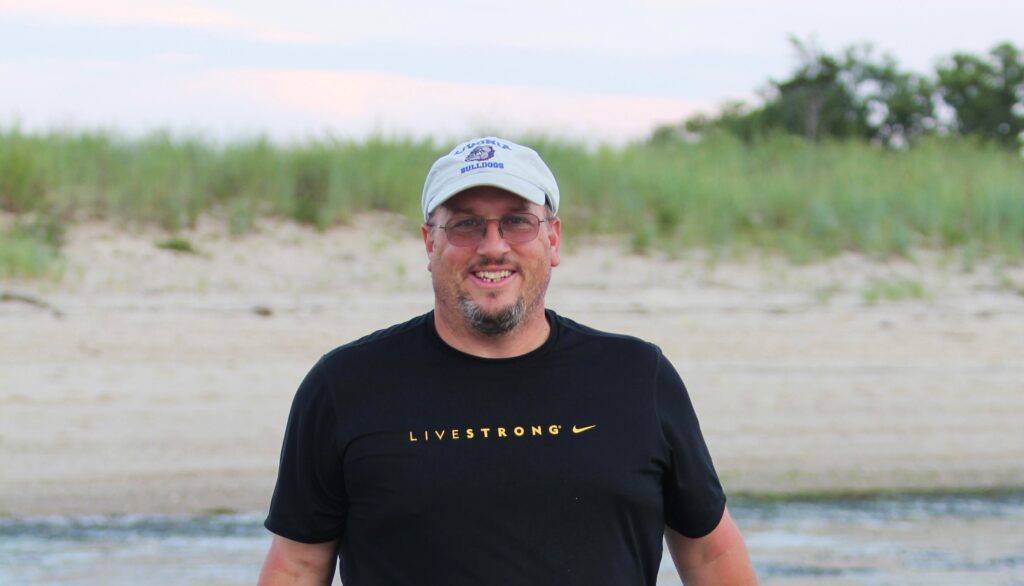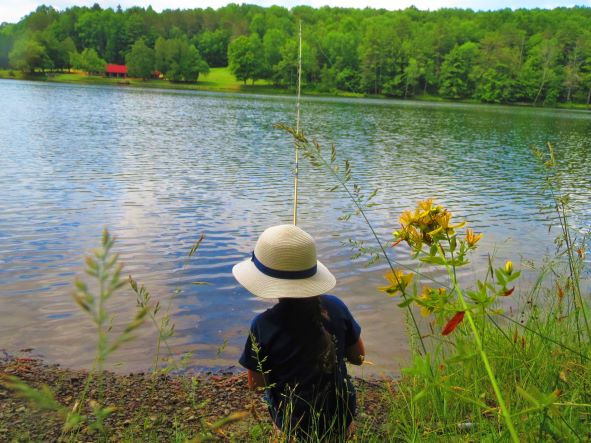By Troy Bishopp
On Clay Conroy’s, Working Cows Podcast,( https://workingcows.net/ep-195-troy-bishopp-managing-an-eastern-grazing-business/), I admitted to not being the same since my only brother, Scott, died way too early in 2017. It’s given me a personal jolt to decipher context in my life. Since then, I’ve been down the emotional rabbit-hole trying to find the proverbial holistic goal matrix that says I should give a f***.
I even talked about farmer stress and burn-out at the 2018, 22nd Annual Vermont Grazing & Livestock Conference but it was sparsely attended. Who signs up to share emotions when there are water systems , grazing regimes and marketing strategies to learn about? I’ll just say, I put myself uncomfortably out there, as damaged goods, amongst folks who were striving for “regenerative” production and profit. The “regen” tagline seemingly missed the mark on personal time accumulation, favoring instead, the bevy of exciting carbon capture grazing practices that must be done.

I remember it well, sitting on the veranda with my wife and 2 bottles of wine from our favorite winery, contemplating our future life and goals as we prepared for my brother’s funeral in 2017. This was a decision day for the rest of our lives. As the final glass was poured, a decision was rendered to pay homage to my brother. We “must” plan for more quality time together. The incentive? Memories, lots of memories.
Are creating memories really a grazing decision? I’ll go out on a limb and say yes, an empathic yes.
I’m concerned that folks who were striving for production and profit are seemingly missing the mark on personal, quality, time-accumulation. Favoring instead, to implement exciting carbon capture grazing practices that must be done to save the planet from itself but not taking care of oneself. I’m not naïve in knowing that farmers and ranchers hold the badge of “doing”. At a funeral however, most are adorned by memories with nary a mention of how hard you worked or days off you didn’t take.
My experience, unpredictable tears and soulful reflection over the past 5 years with my wife, family and closest friends has led me, down or up, on a different path of intentional decisions with an emphasis on carving out more quality time during the grazing season. At the ripe old age of 59 with 38 years of grazing management experience, I believe we must plan for fun or we won’t have any. And this said plan, “must” work, otherwise most quit from poor results and remain in the squirrel-cage of life.
Apparently, this “laziness” idea has hit a nerve. Many farmers tell me, “I’m lucky and wish they could get time off”. To which I say, luck has nothing to do with it. It’s a goal and human endeavor, that takes thought, planning and practical decision-making to make happen. The incentive for emotional wellness must be strong enough for all of us to make the management changes to be successful.
Are we still talking about grazing?
At the Oregon Forage and Grassland Council’s, Lunch with Forages, John Marble and I waxed on if it wouldn’t be a better driver in society to measure more grandchildren or camping days than grazing days for the adoption of properly managed grazing lands? The beauty in my premise is planning for more grazing days equals more grandchildren days. Hooray!!
To be transparent, our custom grazing operation is just one leg in our work-life financial portfolio and my context is specific to my own farm. This 2017 time-back idea required us to do a financial accounting as well as a personal reflection in figuring out the changing dynamic. There are compromises for sure as part of any plan. For us, memories were more important than money. Heresy I know. . .
To get our “time” back that started in 2019, we wanted more control of outcomes. We were essentially downsizing in favor of time, so we gave up rented land, slow-paying grazing customers and discontinued unprofitable winter feeding. And we bought a camper!
The readjustment focused all our energies in our property and our best, proactive grazing customer who shared our common goals of gaining more grazing days, grass-fed beef finishing, variable stocking rates and time off strategy. We both knew that for every Northeast grazing day is a $1.45 savings per animal, ,per day over full feeding. That’s an attractive incentive to work towards together.
For us, this relationship to gain more grazing days on our 90 acres with a variable stocking rate (55 head in the spring and 40 by fall), is just as profitable, for time and money, then it was to take on more land. The key to my decision-making matrix is formulating the yearly grazing plan fundamentals, not being over-stocked and getting the grazing chart started.

Vacation days just don’t happen on our farm, they must be planned for in advance of the grazing season. That’s my wife’s doing as the fun scheduler, in finding camping spots and coordinating family getaways which are marked on the pre-season grazing chart.
To get the most out of nature and your grandchildren on a trip, I have found planning and implementing recovery times that yield the most forage per acre possible (no matter the weather) is a stress-free recipe to relaxation away from the farm. Rest periods for our place typically are 30 days in spring, 40-50 days in the summer and as much as we can get during the stockpile phase starting August 10th. Plenty of pasture equals plenty of time!
With knowing grass growth rates, abiding by realistic recovery times, intensive monitoring and a plethora of pasture—–animal performance is high, soil health is achieved, wildlife proliferates, water infiltration is improved, and grazing days are extended. When I plan for memory creation, it always favors getting more grass. This grazing mindset also gets me started earlier in the spring and later into the fall.

In a practical sense, my paddock moves are a bit controversial. When I’m home, I move daily. When I’m on granddaughter time, the beef animals get a static, big paddock and most likely waste their fair share of forage but who cares. Generally, for weekend getaways, they get a 5-day paddock.
For weeklong family adventures, I’ll have my partner or dad move them only once or twice and just monitor fence voltage and water tub levels. Given the amount of pasture, cows could really care less if you’re around or not. On several occasions, we “stole” an added camping day because the animals were in abundant forage and the weather was beautiful.
The “planned”, healthy rest periods and plentiful pastures also blend well with ancillary events such as weddings, anniversaries, birthdays, visiting friends, pasture walks and speaking opportunities. If your cows and grass are in good shape, you can also find a few flex-day trips too. I consulted my grazing charts and found a metric worth measuring. There in black and white was time off planned and carried out. In 2019 there were 42 days of vacation, during COVID 2020 it was 39 and in 2021 we managed to create memories for 46 days with 2 trips that lasted a week or more.
“Creating time-off is a fine idea but that won’t work for us” seems to echo loudly. To which I respond: What is the point of production, profit and environmental stewardship if you don’t take time for yourself to enjoy God’s bounty? I’m not gonna lie, it takes some work and compromise to make happen but it’s achievable when you put your mind to it. What’s your incentive? Start small and work toward meaningful goals. Life is too short not to try and give yourself an emotional break.
So back to the original question; what’s a grazing decision really worth? Is it a hundred bucks a day? A thousand? Is it all about the money, regenerative practices or can securing your time be just as important a goal to make grazing management worthwhile?

“Life is meant to create memories not money.” ~ Dr. Debasish Mridha


 The 12-year Grazing Chart Journey
The 12-year Grazing Chart Journey »
»